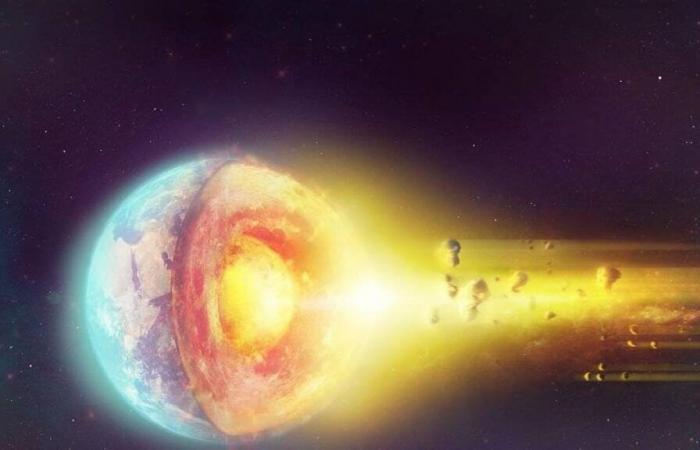
According to the criteria of
A phenomenon that would give the impression that the movement of this part of the planet (the core) would be ‘reversing’, by rotating at the same or slightly lower speed than that of the mantle and crustas detailed by scientists in the magazine Nature Geoscience.
This time it is an investigation led by scientists from the University of Southern California (USC) which comes to corroborate these findings. Indeed, this new publication demonstrates, once again, that the inner core of the Earth is receding – slowing down – in relation to the surface of the planet, according to the new study published last week in Nature.
The inner core is a solid iron-nickel sphere surrounded by the outer core of liquid iron-nickel. Approximately the size of the Moon, the inner core lies more than 5,000 kilometers beneath our feet and represents a challenge for researchers. It cannot be visited or seen, so scientists must use seismic waves from earthquakes to create representations of the movement of the inner core.
That movement of the inner core has been debated by the scientific community for two decades, with some studies indicating that it spins faster than the planet’s surface. New USC study provides unequivocal evidence that the inner core began to slow down around 2010moving more slowly than the surface of the Earth, the institution points out in a statement.
“When I first saw the seismograms that pointed to this change, I was perplexed,” he said. John Vidale, Professor of Earth Sciences at USC Dornsife College of Letters, Arts and Sciences. “But when we found two dozen more observations pointing to the same pattern, the result was inescapable. The inner core had slowed down for the first time in many decades.” “Other scientists have recently defended similar and different models, but our latest study offers the most convincing resolution,” says the scientist.
The relativity of recoil and slowdown
According to American researchers, Our planet’s inner core is considered to be receding relative to the planet’s surface because, for the first time in about 40 years, it is moving slightly slower rather than faster than Earth’s mantle.. Relative to its speed in previous decades, the inner core is slowing down.
Vidale and Wei Wang of the Chinese Academy of Sciences used repetitive waveforms and earthquakes unlike other research. Repeated earthquakes are seismic phenomena that occur in the same location and produce identical seismograms.
According to Vidale, the retreat of the inner core could alter the length of a day by fractions of a second.
Photo:iStock
In this study, the researchers analyzed the seismic data recorded around the South Sandwich Islands of 121 repeat earthquakes that occurred between 1991 and 2023. They have also used data from twin Soviet nuclear tests between 1971 and 1974, as well as French and American repeat nuclear tests from other inner core studies.
According to Vidale, the slowing of the speed of the inner core is due to the agitation of the surrounding liquid iron outer core, which generates the Earth’s magnetic field, as well as the gravitational pulls of the dense regions of the overlying rocky mantle.
The impact on the Earth’s surface
As impressive as it may initially sound that the Earth’s core is slowing down, There is no certainty about the implications of this change for the Earth’s surface. According to Vidale, the retreat of the inner core could alter the length of a day in fractions of a second: “It is very difficult to notice, on the order of a thousandth of a second, almost lost in the noise of the agitated oceans and atmosphere,” he says. the scientist.
Future research by USC scientists aims to trace the inner core’s path in even greater detail to reveal exactly why it moves. “The inner core’s dance may be even more lively than we know so far,” Vidale said in the USC news release.
SCIENCE EDITING





